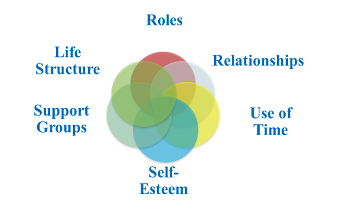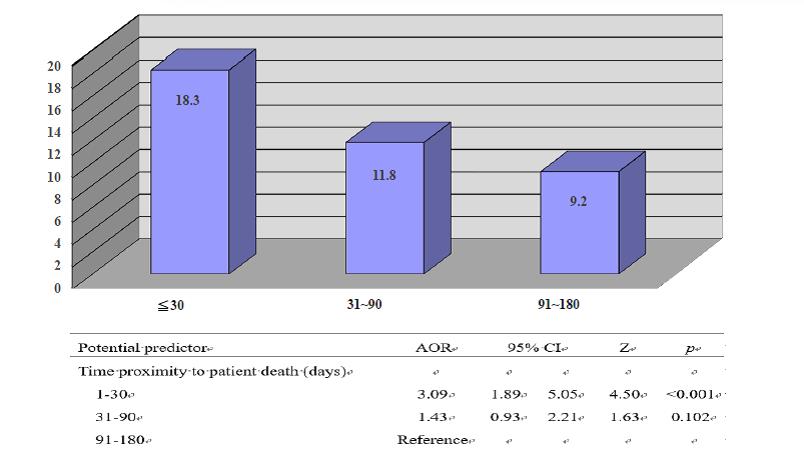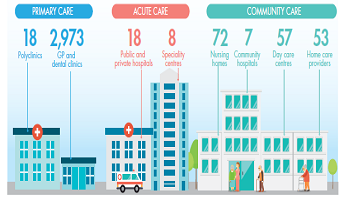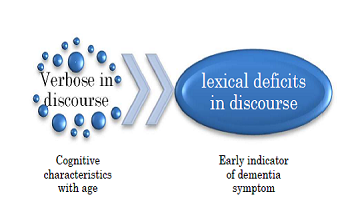Day 2 :
Keynote Forum
Marlene M Rosenkoetter
Augusta University, USA
Keynote: A psychosocial instrument to assess well elderly residing in privatized, residential retirement communities
Time : 09:00-09:35

Biography:
Abstract:

- Rosenkoetter, M., McKethan, Looney, S. & T., Chernecky, C. (2016). Assessment of the Psychosocial Adjustment of Well Elderly Residing in Retirement Communities Issues in Mental Health Nursing, Sep 28:1-9 & 13(11),858-867.
- Ayalon, L. & Green, V. (2013). Social ties in the context of the continuing care retirement community. Qualitative Health Research, 23(3), 396-406.
- Earl, J., Gerrans, P., & Halim, V. (2015). Active and adjusted: Investigating the contribution of leisure, health and psychosocial factors to retirement adjustment. Leisure Sciences, 37(4), 354-373.
- Goodwin, J. (2014). Notions of fantasy and reality in the adjustment to retirement. Ageing & Society, 34(4), 569-589.
- Topa, G. (2015). Psychosocial factors in retirement intentions and adjustment: A multi-sample study. Career Development International, 20(4), 384-408.

Keynote Forum
Yoshiro Fujii
Shin Kobe Dental Clinic, Japan
Keynote: Treating elderly bedridden patients with removal dentures
Time : 09:35-10:10

Biography:
Abstract:
Keynote Forum
Purnima Srinivasan
Health Aim Inc., USA
Keynote: Geriatric health care services and solutions
Time : 10:10-10:45

Biography:
Abstract:
- Geriatric Diseases | Elderly Care | Geriatric Treatment | Geriatric Mental Health | Geriatric Care Management | Geriatrics
Location: Holiday Inn Edinburgh

Chair
Marlene M Rosenkoetter
Augusta University, USA

Co-Chair
Katsuji Kobayashi
Kanazawa University, Japan
Session Introduction
Siew Tzuh Tang
Chang Gung University, Taiwan
Title: Accurate prognostic awareness facilitates, whereas better quality of life and more anxiety symptoms hinder end-of-life discussions
Time : 11:05-11:30

Biography:
Abstract:

- Harper C (2009) The neuropathology of alcohol-related Hung YN, Liu TW, Wen FH, Chou WC, Tang ST. Escalating healthcare expenditures in cancer decedents’ last year of life: A decade of evidence from a retrospective population-based cohort study in Taiwan. Oncologist, 2017; 22: 460-469.
- Tang ST, Hsieh CH, Chiang MC, Chen JS, Chang WC, Chou WC, Hou MM. Impact of high self-perceived burden to others with preferences for end-of-life care and its determinants for terminally ill cancer patients: A prospective cohort study. Psycho-Oncology.2017; 26: 102-108.
- Tang ST, Chen JS, Chou WC, Chang WC, Wu CE, Hsieh CH, Chiang MC, Kuo ML. Longitudinal analysis of severe anxiety symptoms in advanced cancer patients’ last year of life: Relationships with proximity to death, burden, and social support. Journal of the National Comprehensive Cancer Network, 2016; 14(6):727-34.
- Tang ST, Chang WC, Chen JS, Chou WC, Hsieh CH, Chen CH. Associations of prognostic awareness/acceptance with psychological distress, existential suffering, and quality of life in terminally ill cancer patients’ last year of life. Psycho-Oncology, 2016; 25:455-462.
- Kuo SC, Chou WC, Chen JS, Chang WC, Chiang MC, Hou MM. Tang ST. Longitudinal changes in and modifiable predictors of the prevalence of severe depressive symptoms for family caregivers of terminally ill cancer patients over the first 2 years of bereavement. Journal of Palliative Medicine. 2017, 20(1): 15-22.
Katsuji Kobayashi
Kanazawa University, Japan
Title: Association of psychiatric pictures with cognitive and motor symptoms of lewy body disease - An analysis of 60 MIBG-verified cases
Time : 11:30-11:55

Biography:
Abstract:

Summary of the four clusters of symptomatic homogeneity with 3D. PD-depression and PPP-depression with/without hypo-frontality, PDD-psychosis with temporal hypoperfusion, and DLB-visual hallucination with occipital hypoperfusion.
- Kobayashi K, Nakano H, Akiyama N, et al: Pure psychiatric presentation of the Lewy body disease is depression-an analysis of 60 cases verified with myocardial meta-iodobenzylguanidine study. International Journal of Geriatric Psychiatry. 30:663-668, 2015.
- Kobayashi K, Sumiya H, Nakano H, et al: Detection of Lewy body disease in patients with late-onset depression, anxiety and psychotic disorder with myocardial meta-iodobenzylguanidine scintigraphy. International Journal of Geriatric Psychiatry 25: 55-65, 2010.
- Kobayashi K, Kitamura T, Sudo S.: Behaviors of phosphorylated microtubules-associated protein tau (tau) – A role in neuronal and glial apoptosis, white matter lesion, topographical accentuation and 14-3-3 protein expression in of neurofibrillary tangles of Alzheimer’s disease and other Tauopathies. In: Figueiredo B, Meléndez F, eds., Neuroscience Research Advances. Nova Science Publishers, NY, 1-33, 2009.
- Kobayashi K, Sudo S, Matsubara R, et al: Subcortical neuroï¬brillary tangles and argyrophilic grains in a case of familial frontotemporal dementia with parkinsonism. Parkinsonism and Related Disorders 14: 513-516, 2008.
- Kobayashi K, Hayashi M, Nakano H, et al: Correlation between astrocyte apoptosis and Alzheimer changes in gray matter lesions in Alzheimer’s disease. Journal of Alzheimer’s disease. 6: 623–632, 2004.

Naiara Ozamiz
University of the Basque Country, Spain
Title: Psychological and relational improvement of students attending to the university for older adults: An experience in the University of the Basque Country
Time : 11:55-12:20

Biography:
Abstract:

Recent Publications:
- Blazer D (2010) Protection from late life depression. International Psychogeriatrics 22: 171–173.
- Burroughsa H, Lovellb K, Morleyc M, Baldwinc R, Burnsd A, Chew-Grahama C (2005) ‘Justifiable depression’: how primary care professionals and patients view late-life depression? a qualitative study. Medicine & Health. Family Practice 23(3):369-377.
- Jorm AF (2000) Does old age reduce the risk of anxiety and depression? A review of epidemiological studies across the life span. Psychological Medicine 30:11–12.
- Eum Y, Yim J, Choi W(2014) Elderly health and literature therapy: a theoretical review. Tohoku Journal of Experimental Medicine 232(2):79-83.
- Laidlaw K (2015) Cognitive Behaviour Therapy for Older People: An Introduction. London, SAGE Publications, 2015.
Tracey Osmond
Scalabrini Village, Australia
Title: Developing Gerontological Nursing (GerNurs) competencies: An e-Delphi study
Time : 12:20-12:45

Biography:
Abstract:

eDelphi Responses
Rabia Khalaila
Zefat Academic College, Israel
Title: Compassion fatigue and compassion satisfaction among informal caregivers of older adults, in Arab Israeli
Time : 12:45-13:10

Biography:
Abstract:
On Dulberg
Meir Medical Center, Israel
Title: Palliative care in a nursing home: Is it possible? Integrating palliative care in a nursing home
Time : 13:50-14:15

Biography:
Abstract:

- Recommendations for a National Plan for Palliative Care and End-of-Life Situations, Joint Israel, Eshel, Ministry of Health 2016.
- (Long Term Population Forecast in Israel 2009-2059: Technical Publication by the Central Bureau of Statistics, 2014)
- Bentur, N., Emanuel, L.L., Cherney, N., 2012. “Progress in Palliative Care in Israel: Comparative Mapping and Next Steps”. Isr J Health Pol Res 1(9):10.1186.
Suhaniya Samarasinghe
Chelsea and Westminster Hospital, UK
Title: Therapeutic challenges in occult malignancy presenting as stroke
Time : 14:15-14:40

Biography:
Abstract:
Joanna WY Chan
St. Luke’s Hospital, Singapore
Title: Palliative care in the community hospital - A model and case series of patientcentred, community-based care to meet an ageing population's needs
Time : 14:40-15:05

Biography:
Abstract:

- Thomas K. Caring for the Dying at Home. Companions on a Journey. Oxford: Radcliffe, 2003
- https://media.capc.org/filer_public/f7/26/f726f090-2b62 47b1a8e03445a897cb73/houston_methodist_st_john_creating_a_staffing_model.pdf
- Engel GL: The need for a new medical model: a challenge for biomedicine. Science 1977;196:129-136. https://www.moh.gov.sg/content/dam/moh_web/PressRoom/Highlights/2016/2020%20Healthcare%20Manpower%20Plan.pdf

Lisa PL Low
Caritas Institute of Higher Education, Hong Kong
Title: Ageing carers and their ageing family member with mild-moderate intellectual disability in Hong Kong: What needs and care do they have?
Time : 15:05-15:30

Biography:
Abstract:
- Low LPL, Chien WT, Lam LW, Wong KYK (2017). A qualitative study protocol of ageing carers’ caregiving experiences and their planning for continuation of care for their immediate family members with intellectual disability. BMC Geriatrics, 17, 81. doi 10.1186/s12877-017-0473-9
- Low LPL (2017). Elucidating understanding to strengthen ageing family carers capacity to continue caring for ID adults: Preliminary analysis from family interviews. Invited symposium ‘Towards an Aging Society: Inclusive Living for People with Intellectual Disabilities’, 16 May.
- Low LPL, Fan KP (2016). Sampling issues using the grounded theory methodology: Applicability to family caregiving research of clients with dementia and intellectual disability. 15th Qualitative Methods Conference, 3-5 May: 24.
Pei Liu
Southeast University, China
Title: Health status and associated factors among the community-dwelling elderly in China
Time : 15:50-16:15

Biography:
Abstract:
- Chao JQ, Xie WY, Yang YC, Liu H, Jiang LL, Liu P (2013) The effect of integrated health management model on the satisfaction among Chinese elderly. Archives of gerontology and geriatrics. 57(1):27-31.
- Jin H, Pan N, Mou Y, Wang B, Liu P (2011) Long-term effect of interferon treatment on the progression of chronic hepatitis B: Bayesian meta-analysis and meta-regression. Hepatology Research. 41(6):512-23.
- Jin YL, Liu P, Sun JF, Wang CN, Min J, Zhang YF, et al. (2014) Dietary exposure and risk assessment to lead of the population of Jiangsu province, China. Food Additives and Contaminants Part a-Chemistry Analysis Control Exposure & Risk Assessment. 31(7):1187-95.
- Jin YL, Liu P, Wu YN, Min J, Wang CN, Sun JF, et al. (2014) A systematic review on food lead concentration and dietary lead exposure in China. Chinese Medical Journal. 127(15):2844-9.
- Zhang H, Chao J, Li X, Liu P. (2015) Health Care Utilization and Costs in Patients with Hepatitis B related Disease in Jiangsu, China. Iranian journal of public health. 44(2):297-298.
Marina Gharibian Adra
American University of Beirut, Lebanon
Title: Nursing home quality of life: A theoretical model integrating the views of residents, staff and family members
Time : 16:15-16:40

Biography:
Abstract:

Residents’ Perceptions of Quality of Life

AbdulRahem Ibraheem
World Health Organization | Nigeria
Title: Public awareness and attitude towards palliative care in Nigeria
Time : 16:40-17:05

Biography:
Abstract:
Tiziana Candiani
Hospital Cuggiono ASST WEST MI, Italy
Title: Chronic obstructive bronchitis and depression in elderly outpatients
Time : 17:05-17:30

Biography:
Abstract:
Takako Yoshimura
Kyoto Gakuen University, Japan
Title: The relationship between lexical retrieval in discourse and cognitive functions in dementia - In comparison with the elderly population
Time : 17:30-17:55

Biography:
Abstract:

Recent Publications:
- Brain Function Test Committee (1997) Visual Perceptual Test for Agnosia. Tokyo: Shinko Igaku Suppann-sha. Goodglass H, Kaplan E (1983).
- The Boston Diagnostic Aphasia Examination. Boston: Lea & Febi. Gold D et al (1998).
- Measurement and correlates of verbosity in elderly people. Journal of Gerontology 43(2): 27-33. Pekkala S et al (2013).
- Lexical retrieval in discourse: An early indicator of Alzheimer’s dementia. Clinical linguistics & Phonetics 27(12):905-921. Yoshimura T et al. (2016).
- Word production in discourse and cognitive functions in elderly - the implication for the demented population-. International Psychogeriatric Association Asia Region 2016 Meeting Abstract Book 188-189.













